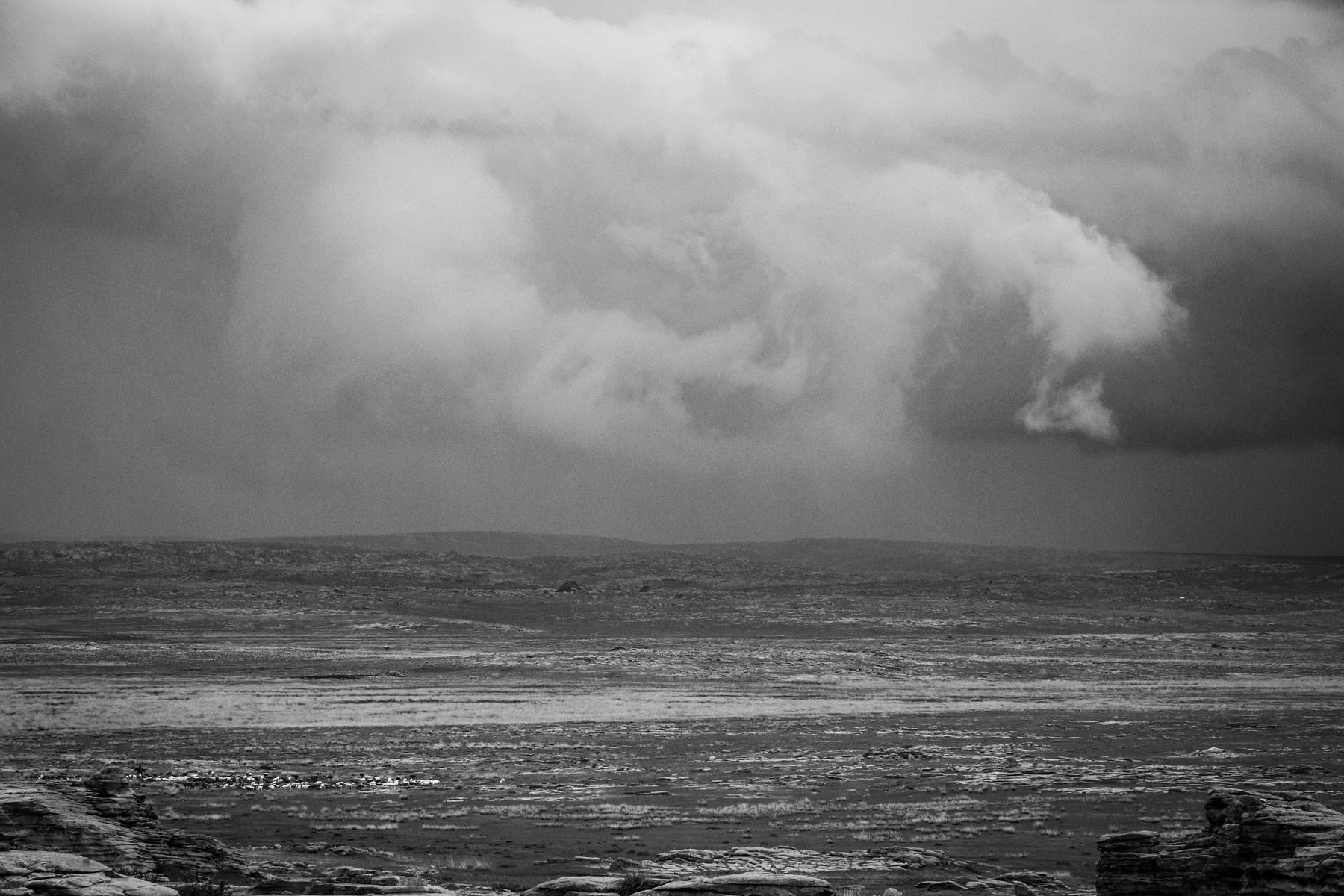
PUBLICATIONS
Asiapast publications
Early integration of pastoralism and millet cultivation in Bronze Age Eurasia.
Mobile pastoralists are thought to have facilitated the first trans-Eurasian dispersals of domesticated plants during the Early Bronze Age (ca 2500–2300 BC). Problematically, the earliest seeds of wheat, barley and millet in Inner Asia were recovered from human mortuary contexts and do not inform on local cultivation or subsistence use, while contemporaneous evidence for the use and management of domesticated livestock in the region remains ambiguous. We analysed mitochondrial DNA and multi-stable isotopic ratios (δ13C, δ15N and δ18O) of faunal remains from key pastoralist sites in the Dzhungar Mountains of southeastern Kazakhstan. At ca 2700 BC, Near Eastern domesticated sheep and goat were present at the settlement of Dali, which were also winter foddered with the region’s earliest cultivated millet spreading from its centre of domestication in northern China. In the following centuries, millet cultivation and caprine management became increasingly intertwined at the nearby site of Begash. Cattle, on the other hand, received low levels of millet fodder at the sites for millennia. By primarily examining livestock dietary intake, this study reveals that the initial transmission of millet across the mountains of Inner Asia coincided with a substantial connection between pastoralism and plant cultivation, suggesting that pastoralist livestock herding was integral for the westward dispersal of millet from farming societies in China.
Related research on steppe pastoralism from the Makarewicz Lab

Isotopic evidence for ceremonial provisioning of Late Bronze age khirigsuurs with horses from diverse geographic locales
Cheryl A.Makarewicz, Christine Winter-Schuh, Heather Byerly, and Jean-Luc Houle Quaternary International (2018) 476: 70-81 --- " Khirigsuurs are communal ritual and mortuary monuments that featured prominently on Late Bronze Age pastoralist landscapes of the Mongolian steppe through the mid-late second millennium to early first millennium cal BC. Khirigsuurs sustained ceremonies that legitimized the relationship between the deceased and the participants, facilitated the formation of new alliances, and emphasized integration and cohesion between mobile pastoralist communities through monument building, ritual horse slaughter, and feasting. Horses played a prominent role in ceremonial activities conducted at khirigsuurs, their heads and hooves regularly deposited in small stone satellite mounds as part of publically visible ceremonies associated with mortuary celebrations that simultaneously integrated mobile pastoralist communities" ... To read more, click on the image.

Horse Paleogenomes and Human-Animal Interactions in Prehistory.
George Perry and Cheryl A. Makarewicz - Trends in Genetics (2019) 35: 473-475 --- "A new analysis of paleogenomic data from 278 ancient horses (Fages et al. Cell http://doi.org/10.1016/j.cell.2019.03.049) finds that this animal – crucially important to many ancient and contemporary human societies for subsistence, transportation, conflict, and more – was domesticated in at least two different regions, but with the geographic and cultural origins of the modern domestic horse lineage remaining unknown. By tracing ancient horse population movements and inferring the spatiotemporal trajectories of phenotypic adaptations, this study provides fresh perspectives on past human group interactions and activities" ... To read more, click on the image.

Intensification in pastoralist cereal use coincides with the expansion of trans-regional networks in the Eurasian Steppe.
A. Ventresca-Miller and C.A. Makarewicz - Scientific Reports (2019) 9:8363 --- "The pace of transmission of domesticated cereals, including millet from China as well as wheat and barley from southwest Asia, throughout the vast pastoralist landscapes of the Eurasian Steppe (ES) is unclear. The rich monumental record of the ES preserves abundant human remains that provide a temporally deep and spatially broad record of pastoralist dietary intake. Calibration of human δ13C and δ15N values against isotope ratios derived from co-occurring livestock distinguish pastoralist consumption of millet from the products of livestock and, in some regions, identify a considerable reliance by pastoralists on C3 crops. We suggest that the adoption of millet was initially sporadic and consumed at low intensities during the Bronze Age, with the low-level consumption of millet possibly taking place in the Minusinsk Basin perhaps as early as the late third millennium cal BC." ... To read more, click on the image.

Carbon Isotope Ratios of Plant n-Alkanes and Microstratigraphy Analyses of Dung Accumulations in a Pastoral Nomadic Winter Campsite (Eastern Mongolia).
Natalia Eguez and Cheryl A. Makarewicz - Ethnoarchaeology (2019) 10, 141-158. --- "Livestock fecal remains provide an important source of information on past animal husbandry systems and dung use. A combined micromorphological and biomolecular investigation of dung deposits brings new perspectives into past landscape land use and animal husbandry strategies by providing seasonal-scale information on livestock dietary intake as well as intensity of dung deposition in penning spaces. " ... To read more, click on the image.

Pasture usage by ancient pastoralists in the northern Kazakh steppe informed by carbon and nitrogen isoscapes of contemporary floral biomes.
A. Ventresca-Miller, T.M. Bragina, Y.A. Abil, M.M. Rulyova, and C.A. Makarewicz - Anthropological and Archaeological Sciences (2019) 11: 2151-2166/ " Identification of variation in pasture use by domesticated livestock has important implications for understanding the scale of animal husbandry and landscape use in modern and ancient societies alike. Here, we explore the influence of pasture floral composition, salinity, and water availability on the carbon (δ13C) and nitrogen (δ15N) isotopic composition of plants from the steppes of Kazakhstan." ... To read more, click on the image.

Mobility and diet in the Iron Age Pontic Forest-Steppe: A multi-isotopic study of urban populations at Bel’sk.
A. Ventresca Miller, A.R., Johnson, J.A.. Makhortykh, S., Litvinova, L., Taylor,T., Rolle, R. and Makarewicz. C.A. Archaeometry (2019) 6: 1399-1416 --- "High mobility among Scythian populations is often cited as the driving force behind pan‐regional interactions and the spread of new material culture c.700–200 bce, when burgeoning socioeconomic interactions between the Greeks, Scythian steppe pastoralists and the agro‐pastoral tribes of the forest‐steppe played out across the region. " ... To read more, click on the image.

Isotopic Investigations of Pastoralism in Prehistory.
Edited by Alicia R. Ventresca Miller, Cheryl A. Makarewicz. --- "Pastoralism involves the exploitation of domesticated livestock and has been a vital component of human subsistence and surplus economies for thousands of years. By supplying their human caretakers with ready and renewable sources of milk, meat, fat, fiber, skins, and dung, livestock serve as an important source of subsistence and wealth in pastoralist communities. " ... Click on image to find out more on this edited volume

Stone lines and burnt bones: ritual elaborations in Xiongnu mortuary arenas of Inner Asia.
Bryan K. Miller, Cheryl A. Makarewicz , Jamsranjav Bayarsaikhan and Tömörbaatar Tüvshinjargal Antiquity (2018) 92: 1310-1328. --- "The vast mortuary complexes of the Xiongnu, the world’s first nomadic empire (c. 200 BC–AD 100), were important statements of elite power and ritual commemoration in Inner Asia. Very few of the features that accompanied the main tombs, however, have been fully excavated and investigated. This study is one of the first to assess completely the small archaeological features—and associated faunal remains—that surround the more monumental structures, features that intimate substantial investments in, and ritual activities around, these mortuary arenas." ... To read more, click on the image.

Urban and nomadic isotopic niches reveal dietary connectivities along Central Asia’s Silk Roads.
Taylor R. Hermes, Michael D. Frachetti, Elissa A. Bullion, Farhod Maksudov, Samariddin Mustafokulov & Cheryl A. Makarewicz Scientific Reports volume 8, Article number: 5177 (2018). --- "The ancient ‘Silk Roads’ formed a vast network of trade and exchange that facilitated the movement of commodities and agricultural products across medieval Central Asia via settled urban communities and mobile pastoralists. Considering food consumption patterns as an expression of socio-economic interaction, we analyse human remains for carbon and nitrogen isotopes in order to establish dietary intake, then model isotopic niches to characterize dietary diversity and infer connectivity among communities of urbanites and nomadic pastoralists." ... To read more, click on the image.

Pastoralist Mobility in Bronze Age Landscapes of Northern Kazakhstan: 87Sr/86Sr and δ18O Analyses of Human Dentition from Bestamak and Lisakovsk.
Ventresca-Miller, A., Winter-Schuh, T., Usmanova, E., Logvin, A.V., Shevnina, I.V., and Makarewicz, C.A. Environmental Archaeology (2018) 23: 352-366 --- "The role of migration and mobility of people across the steppe has often been cited as key to Bronze Age developments across Eurasia, including the emergence of complex societies in the steppe and the spread of material culture. The central Eurasian steppe (CES) is a focal point for the investigation of the shifting nature of pastoral societies because of the clear transition in archaeological patterning that occurred from the Middle (MBA) to Late Bronze Age (LBA). " ... To read more, click on the image.

